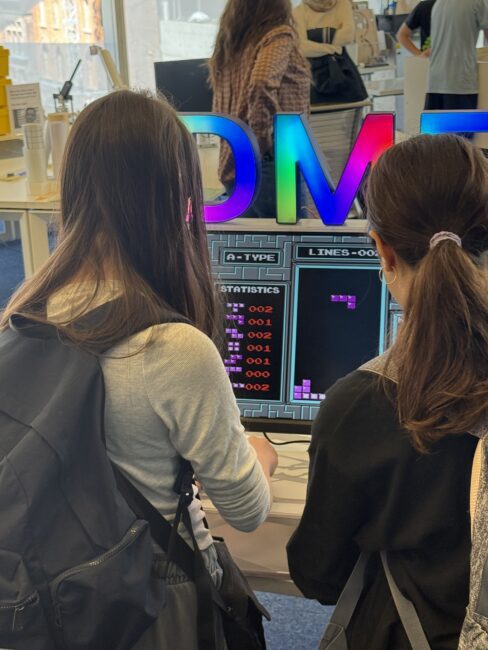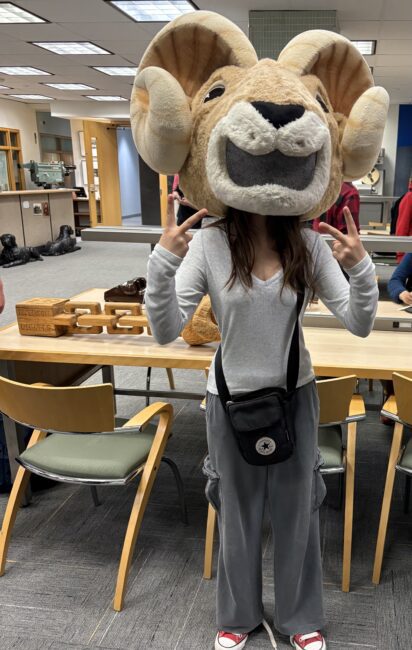
This past spring, when a middle school teacher reached out to the libraries’ Faculty of Community Services liaison librarian, Jane Schmidt asking about a potential Library visit, it opened an opportunity to spark imaginations and expand ideas about academic libraries. The idea for a visit then evolved from a Library tour into a unique and eye-opening excursion that offered curious middle schoolers a firsthand glimpse into the world of academic discovery.
When first approached about a visit, Schmidt’s initial reaction was: “why not introduce these kids to the incredible tools, knowledge, and spaces we have at TMU Libraries? Maybe it will light a spark.”
While many of the students mentioned wanting to go to university after high school, having a chance to ”see and walk through the campus, explore the library, and interact with the resources—that makes it real. That’s powerful,” says Schmidt.
With that, what started as a simple tour developed into something more meaningful. The visit became an intentional effort to demystify post-secondary education. An itinerary for the visit was set. When the students arrived on campus they were guided into various areas of the Main TMU Library, exploring everything from 3D printing and virtual reality in the Digital Media Experience Lab to participating in a scavenger hunt in the stacks.
At the Libraries’ Media Creation Studio, they had the chance to hear their own voices in the podcast booth and learn about lighting for photography. At the Immersion Studio they heard about creating immersive experiences for school projects, and while amazed, it wasn’t just the tech that caught their interest. Students were equally curious about the stacks. “I was really touched by how many of them opted to explore the books rather than only play with the tech,” says Schmidt.

Perhaps one of the most memorable moments of the visit came during their time spent at the Archives and Special Collections. There, students discovered early camera equipment, TMU’s retired Eggy the Ram mascot head, and Wampum Belts—which prompted conversations around reconciliation and the university’s renaming.
“They showed an impressive understanding of why renaming matters. We connected it to the broader context of reconciliation and even discussed the renaming of Dundas Station,” says Schmidt.
The visit wasn’t just eye-opening for the students—it was exciting for the teachers as well.
The feedback was overwhelmingly positive, with Mr. IIic, one of the class teachers, referring to the visit as “formative,” stressing its long-term value. “The kids don’t know how enriching it is,” says IIic. “But it will come back to them—when they see a piece of tech or remember a conversation. It plants a seed.”
As for offering more school visits?
“Absolutely, we’ll do it again,” says Schmidt. “Investing in young people is never time wasted. If we want the next generation to be curious, thoughtful, and engaged, we need to give them opportunities to see the wider world—and their place in it.”